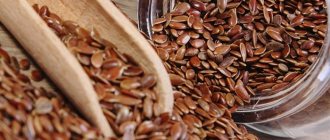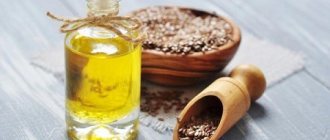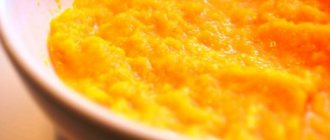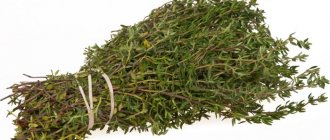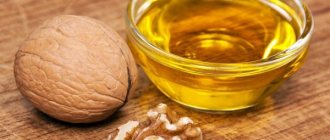Olive oil is a valuable product, rich in vitamins, oleic and Omega-3 acids. Everyone knows that this herbal elixir of life and health is beneficial for the adult body. But is olive oil okay for children? And at what age is it recommended to include this amazingly tasty and valuable product in a child’s diet? These questions are valid. After all, as you know, not everything that adults can do is useful for children. Caring parents try to adapt the home diet to the needs of each family member. That's why they ask questions like this.
Is olive oil okay for children?
Without much preamble, let’s say that olive oil is okay for children! This product is healthy and safe for a growing body. Of course, only a born baby will not yet understand the taste of this product, and his digestive system is not ready for such a fat-rich component. Therefore, there are small age restrictions on the use of olive oil. You can add a small amount of olive oil to children's dishes if the baby is already 10-12 months old.
Earlier, when the baby has not yet had time to get acquainted with different options for complementary feeding, and there are no multi-component products in his diet, one should try to avoid complex combinations and unnecessary additives. But as soon as the baby begins to eat soups, porridges with added fruits, vegetable mixes and dishes that contain 2 or more components, you can carefully include a drop of natural olive oil in the diet.
The benefits of olive oil
Since the answer to the question of whether olive oil can be used for children has been found, and it allows for the inclusion of this product in the baby’s diet, it will be interesting to know how such a supplement is useful.
Olive oil:
- Strengthens blood vessels;
- Maintains skin elasticity;
- Has an anti-inflammatory effect;
- Blocks bad cholesterol;
- Has a beneficial effect on digestion;
- Saturates the body with antioxidants;
- Gives the body a charge of vigor and strength.
A small drop of virgin olive oil contains a storehouse of vitamins and nutrients. If this product is consumed in accordance with age standards, you can reinforce the body with a mass of useful microelements and protect it from a number of harmful effects.
Olive or sunflower?
When thinking about introducing oil into their baby's complementary foods, many parents are puzzled by the choice of “olive or sunflower?” Some people believe that oil pressed from olive fruits is much better than sunflower oil, while others do not accept olive oil due to intolerance to the product. There is no clear advice on what to choose. Ideally, a child’s diet should contain both oils in moderation.
But if there is an individual intolerance to a product, then the choice should be made on the option that does not cause an allergic reaction. In theory, sunflower oil is considered less allergenic than olive oil. Some experts even allow the inclusion of sunflower seed oil in children's diets before 12 months (7-10 months). However, you should remember that an allergic reaction is possible to each product option (olive, sunflower, etc.). Therefore, any of the oils should be introduced into the baby’s menu with caution. If you decide to start with sunflower oil, then you should try olive oil no earlier than a month later and vice versa.
What kind of olive oil can children use?
Those who love olive oil know that there are many varieties of this product available. And, since the answer to the question whether olive oil can be used for children is positive, then it’s time to think about choosing a quality product option. When buying olive oil for your baby’s diet, you should pay attention to bottles marked “Extra Virgin”.
This mark means that this is virgin oil. This is an unrefined product in which all the value of nutrients is preserved. This olive oil is of the highest quality. Namely, these are the ingredients that should make up a children's diet.
How much olive oil will not harm a child?
It is absolutely clear that large quantities of this product should not be given to children. In this regard, the question arises of how much oil to add to children's dishes and how often this can be done. It is believed that children should be offered no more than 1-2 drops of olive oil.
An older child (from 3 years old) can add 3-4 drops to the dish. Too much olive oil is not good for you, even for adults. And oil is a specific product. If added in moderation, it makes the taste of the dish richer and more intense. And if you overdo it with oil, the taste of the food will be ruined. There is no clear answer to the question of how often you can give olive oil to your child. It is believed that a moderate amount of this product in the diet will not harm. Olive oil should be added to children's dishes according to location and taste. This additive is great for porridges, soups, and vegetable purees. Children aged 3 years and older enjoy eating vegetable salads seasoned with olive oil and other dishes combined with this product.
Tags: healthy eating, what kind of food, oil, Olive oil, benefits of oils, proper nutrition
- Related Posts
- Where to choose dishes for a child?
- Intelligence and breastfeeding
- What vitamins do children need at an early age?
« Previous entry
Description of baby oils
Among the first hygiene items for a baby is multifunctional oil. This product has recently begun to be actively used along with creams and lotions.
Basic properties:
- Prevention and treatment of diaper rash, relief of inflammation;
- Prevents chafing;
- Antiseptic properties prevent inflammation;
- In some cases, on the recommendation of a pediatrician, they are used instead of water washes;
- Used for massage;
- Moisturizes and nourishes the skin;
- Used as a solvent for injections.
There are napkins soaked in oil on sale - this is a convenient tool outside the home.
What's in it
Not all formulas are suitable for a particular baby. It is necessary not only to read the manufacturer’s recommendations, but also to take into account the opinions of consumers and aromatherapy specialists.
Function of essential oils:
- Vaseline – cleanses, soothes. Some pediatricians recommend it for treating the mucous membrane, but you should pay attention to the fact that it is a synthetic base and does not have antibacterial and healing properties;
- Olive – nourishes, moisturizes, it should be cold-pressed, stored in the refrigerator in a dark glass;
- Sweet almond is the basis for the massage mixture, another function is ultraviolet protection;
- Shea – softens, nourishes, helps for sensitive skin, dermatitis, peeling, inflammation;
- Peach – helps with diaper rash;
- Apricot kernels are used for massage, treat diaper rash;
- Sasanqua oil (from Japanese camellia) is rich in oleic acid and helps dry skin with flaking and redness. Well absorbed.
Also used: peach, sunflower, sea buckthorn, tea tree, grape seed. It is advisable to sterilize those purchased at the pharmacy. How to do it?
First you need to check the quality of the product. To do this, place it in a dark place for 30 minutes. If a sediment appears - the oil is of high quality, flakes float - the product is not suitable for use.
Sterilization steps:
- Place a container of water on fire;
- Place oil inside a small bottle, the water level should be higher;
- Heating occurs gradually, the oil should not gurgle, and the water should boil. 5-7 minutes is enough.
It is better to prepare the sterilized mixture at a time, especially for babies with sensitive skin. The pharmacy sells ready-made products intended for newborns.
Security Recommendations
Oil for a newborn may contain several components. Not all of them can be useful, and some can even be dangerous. What components are useful:
- Mineral oil and petroleum jelly are used as a base;
- Essential oils and plant extracts add to the composition beneficial substances characteristic of the plants from which they are isolated;
- Vitamins.
It is not advisable to contain dyes and fragrances. The shelf life should not exceed 1 year, otherwise this product contains preservatives and synthetic substances. The product should not be cloudy and have a pleasant smell.
Is it possible to add oil to baby food?
When preparing complementary foods, many mothers wonder whether to add oil or not and whether it will be bad for the baby if there is too much oil. We tell you at what age, how much and what kind of oil to give a baby in complementary foods, so that the fats are healthy. Recommendations are given by Elena Viktorovna Deryabina, candidate of medical sciences, associate professor of the Department of Pediatrics at Ulyanovsk State University, pediatrician, gastroenterologist, nutritionist and head physician of a multidisciplinary medical center in Ulyanovsk.
— Elena Viktorovna, why add vegetable oil to baby’s complementary foods?
— Fats play a very important role for the body of both children and adults.
Some functions of lipids
| Energy | When fats are broken down, 30-40% of the energy that children need for growth and existence is released. |
| Plastic | Fats are components of organs and tissues, cellular and subcellular membranes, and its function depends on the correct composition of the membrane. Saturated fats reduce the fluidity of the membrane, it becomes less mobile, and polyunsaturated fatty acids increase the fluidity (lability) of the membrane, which is important for maintaining its structure and function. |
| Regulatory | Eicosanoids are formed from polyunsaturated fatty acids - signaling molecules that act in various physiological systems and pathological processes, such as: enhancing or suppressing inflammation, allergies, fever and other immune reactions; contribute to the perception of pain; regulation of cell growth; blood pressure control; and modulation of blood flow to tissues. |
— The properties of fats depend on the fatty acids in their composition.
Saturated fatty acids
| Unsaturated fatty acids
|
— Saturated fats are a good source of energy and cholesterol, which is also needed for the body to function. But unsaturated acids, in particular arachidonic (ARA, Omega-6), eicosapentaenoic (EPA, Omega-3) and docosahexaenoic (DHA, Omega-3) acids, are very important - they are part of the phospholipids of cell membranes and are involved in the formation of eicosanoids, and therefore they are of particular importance for the immune and nervous systems.
— What beneficial properties do vegetable oil and butter have?
— Children under one year old need oil in small quantities. This is an additional source of energy and components that we are talking about. But the main source of fat for the baby will be breast milk or an adapted formula.
Vegetable oil
| Butter
|
— Oil in optimal quantities is very beneficial for digestion. It promotes the absorption of fat-soluble vitamins and trains the pancreas; the fatty component of food stimulates contractions of the gallbladder. Therefore, fats are needed in optimal amounts in baby food.
— What could be the harm of vegetable and animal fats for up to a year?
— Their excess in the diet is dangerous, it unnecessarily loads the bile ducts and pancreas: their enzymatic activity forms and increases gradually, the baby’s body simply cannot cope with the processing of fats.
— How do the fatty acids in baby formula differ from those in vegetable oil and butter?
— Formula manufacturers are trying to adapt the fat component of formulas and bring it closer to the fat component of human milk. For example, cow or goat milk contains little linoleic acid compared to breast milk: it is added from vegetable fats. Palmitic fatty acid is taken from vegetable palm oil or the milk fat of cow or goat milk. The mixtures are also additionally enriched with Omega-3, -6 polyunsaturated fatty acids.
— In the opinion of doctors, are there any special indications for introducing oil into a child’s diet?
— Even with insufficient body weight and deficiencies, you need to be careful with fats and not exceed their permissible limit in the child’s diet, including in the form of oil. Parents often believe that fat improves the child’s stool: it supposedly makes it softer. This belief is incorrect. As we have already said, excess fat can lead to a malfunction of the biliary tract, which can affect the character of the stool.
— Is it true that oil improves the taste of complementary foods?
— Butter, especially butter (milk fat), significantly improves the taste of food. But this perception of the product is largely related to the taste preferences of parents. Children's taste receptors develop gradually and may respond to food differently than adults.
— When to introduce oil into complementary foods?
— According to the National Program for Optimizing the Feeding of Children in the First Year of Life, butter is allowed to be given as early as 4-6 months, that is, with the beginning of the transition to solid food. But complementary feeding itself does not start with vegetable oil or butter. The first complementary foods are porridge or vegetable purees in their pure form. After the baby gets acquainted with them, you can add butter to the porridge, and vegetable oil to the vegetables.
It's best to start with vegetable oil because it has less saturated fat and is non-dairy. The introduction of dairy products is postponed to a later period.
If your child is obese, overweight, or has problems with the biliary tract, you can delay the introduction of oil into complementary foods.
How much oil to give to a baby up to one year old
- 4-5 months: vegetable oil - 1-3 g, butter - 1-4 g.
- 6-7 months: vegetable oil - 5 g, butter - 4 g.
- 8-12 months: vegetable oil - 6 g, butter - 5 g.
Digestive problems in infants when oil is introduced too early
- Abnormal stool.
- Overload of the pancreas and bile ducts.
- Inability to digest fats.
- The “wrong” fats can block other substances, such as calcium.
- Load of the body with cholesterol.
- Interference with the supply of other ingredients.
- Excessive weight gain.
— What kind of oil should be given to infants in complementary feeding?
— Butter, sunflower or olive oil are the best options for complementary feeding. Other oils are not recommended for children. We must be guided by the following principle: the child should eat what his parents eat most often. The listed oils are also the most balanced in terms of the composition of saturated and unsaturated fatty acids.
— What should you pay attention to when choosing a product?
— Trust in the manufacturer is important. Choose an oil that your family knows and uses. The quality of the product is compliance with GOST, satisfactory results of inspections by Rospotrebnadzor.
Vegetable oil
| Butter
|
— If it is possible to find a children's product, then it is better to purchase it. Oil for children is produced taking into account all the requirements for baby nutrition.
— Is there an allergy to oil?
— As with any food component, an allergy can also occur to oil, since it contains traces of proteins from the main raw materials. It is to prevent violent reactions that a gradual introduction to complementary foods and the gradual introduction of oil are recommended. If a reaction develops from consuming the oil, an allergy may be suspected. Then, after eliminating it from the diet, the symptoms usually go away.
If a child is allergic to cow's milk protein, dairy products, including butter, are not introduced to him. You need to use vegetable oils. Butter is given after expanding the dairy diet. Sometimes there is an allergy to sunflower oil: then a substitute is selected, for example, olive oil. If an allergy develops to it, choose a different type of oil.
Fats are a very important component in baby food. When compiling a baby’s diet, you need to take into account that oil may already be added to commercially produced complementary foods. Oil can be gradually introduced into homemade complementary foods in the amount allowed by the National Program for Optimizing Child Feeding. But you should always remember that in the first year of life the main source of fat for a child is breast milk or an adapted formula.
Pediatrician Elena Viktorovna Deryabina
*The ideal food for an infant is mother's milk. WHO recommends exclusive breastfeeding for the first 6 months. MAMAKO® supports this recommendation. Before introducing new foods into your baby’s diet, consult a specialist.
Foreign manufacturers
Many popular cosmetology companies produce care products for babies. Most of them are of high quality and natural composition. But they also differ in price from domestic brands. The cost can sometimes be several times higher.
Bubchen
The German product contains sunflower and shea butter, calendula extract and vitamin E. The ingredients cleanse, moisturize the skin, and restore the protective lipid barrier.
The drug is used for massage, for moisturizing, and also for softening milk crusts on the head. Does not contain preservatives or minerals. Reviews contain positive feedback on the use of oil for stretch marks during pregnancy.
Country: Germany.
Price - from 480 rub.
Bubchen baby oil
Advantages:
- Natural composition;
- Quickly absorbed;
- Light texture;
- Cleans;
- Economical.
Flaws:
- Inconvenient lid.
Me to You Baby "Nutritious"
You can find many positive reviews about the Italian-made drug. Contains royal jelly of bees, which softens and nourishes, and is an antiseptic.
Coconut oil acts as a protective film on the skin. Among the reviews: removes crusts from the head the first time. Used for massage and moisturizing.
Country: Italy.
Price - from 260 rub.
Me to You Baby “Nutritional” baby oil
Advantages:
- Effective;
- Well moisturizes and nourishes;
- Affordable price.
Flaws:
- No.
Mustela
Massage oil can be used on children from birth. All Mustela products are developed in collaboration with healthcare professionals following scientific research.
Contains:
- Natural oils: sunflower, pomegranate seeds - they moisturize the skin;
- Avocado restores the protective barrier.
The product has a pleasant smell and does not cause allergies.
Country: France.
Price - from 780 rub.
Mustela baby oil
Advantages:
- Convenient bottle with dispenser;
- Does not contain harmful substances;
- Relieves inflammation and irritation.
Flaws:
- No
Weleda
Oil mixture with calendula for daily care and massage of the baby. Among the ingredients is sesame oil, which helps relieve inflammation. The product is especially recommended for sensitive skin and has a warming effect. The 100% natural composition makes the drug safe for newborns. Volume 200 ml.
Weleda baby oil
Brand country: Germany.
Price - from 800 rub.
Advantages:
- quality of a famous brand;
- leaves no traces;
- absorbs quickly;
- safety.
Flaws:
- price
Weleda colic prevention
Another drug from a German brand. The base is almond oil with the addition of extracts of marjoram, chamomile, and cardamom. All ingredients relax, relieve pain and stimulate bowel function.
It is useful not only for massage and care, but also for relieving bloating, colic, and flatulence. The bottle with a small volume dispenser is 50 ml, but it lasts for a long time, since 5-6 drops are enough for one procedure.
Brand country: Germany.
Price - from 900 rub.
Weleda baby oil colic prevention
Advantages:
- quality composition;
- relieves colic.
Flaws:
- No.
Pigeon
Moisturizing Japanese baby oil. It is based on the Pigeon Baby Lipid formula, which allows you to gently care for your baby's skin. Active ingredients include jojoba oil, ceramides retain moisture, and squalane makes the skin silky. Recommended after bathing and when changing a diaper.
The product has been tested for allergic reactions. The presence of natural ingredients ensures a short shelf life.
Country: Japan.
Price - from 1300 rub.
Pigeon baby oil
Advantages:
- convenient dispenser;
- does not cause allergies;
- good cleansing;
- natural composition.
Flaws:
- high price.
Helan Baby Protective Softening Oil
Active ingredients include calendula extract, carrot extract, sweet almond extract, grape seed extract and soybean extract.
All of them have retained their beneficial properties thanks to special technology; natural ingredients are grown in conditions without the use of chemicals and perform the function of controlling hydration, preventing inflammation, and soothing.
The oil creates a protective barrier on the skin and can be used for cleansing and massage. Many users note that the drug can be used for all family members.
Country: Italy.
Price - from 1200 rub.
baby oil Baby protective softening oil Helan
Advantages:
- high quality natural ingredients;
- restores normal pH of the skin;
- gentle cleansing.
Flaws:
- No.
Mommy Care
The Israeli product is based on natural substances, including calendula, which relieves inflammation, irritation, and removes rashes. Wheat sprouts with sweet almonds fill the skin with vitamins and accelerate the renewal of epidermal cells. Chamomile and lavender have a relaxing effect and promote restful sleep. A few drops are added to the water while bathing. Massage helps relieve gases and improves digestion.
Country: Israel.
Price - from 650 rub.
Mommy Care baby oil
Advantages:
- prevents atopic dermatitis;
- calms;
- improves digestion.
Flaws:
- No.
Topfer
The natural formula in the base ensures the maintenance of the natural functions of the epidermis. It is used for care and massage from the first days of a baby’s life. The active ingredient soy contains a large amount of vitamin E, which nourishes the skin. Lecithin has restorative functions and creates a protective barrier.
Relieves irritation, inflammation, soothes calendula extract. Pleasant consistency, the smell is noted by many users. The oil is well absorbed.
Country: Germany.
Price - from 570 rub.
Topfer baby oil
Advantages:
- natural composition;
- wound healing effect;
- German quality.
Flaws:
- No.
Librederm Baby
The safety of the product for babies has been clinically proven, and testing has established its effectiveness. The content of vitamins A, C, E nourishes, sunflower creates antibacterial protection, olive accelerates the healing of small wounds, makes the skin soft.
Grape seed oil has a healing effect for dermatitis, removes peeling and itching.
The product is used for massage and during bathing.
Price - from 420 rubles.
Librederm Baby oil for babies
Advantages:
- balanced composition;
- help with dermatitis;
- doesn't stick.
Flaws:
- No
Olive oil works wonders for babies
They, of course, are not similar to each other either in appearance or taste, if compared solely by external data. And yet, olive oil and breast milk have a surprising similarity.
Olive oil contains omega-3 and omega-6 fatty acids in proportions similar to breast milk, and the same percentage of linoleic acid. This circumstance makes it indispensable in the formation of the myelin layer (or nerve fibers) and the development of the child’s brain. In addition, the plant “colleague” is easily digestible and contributes to the normal functioning of the stomach, preventing such frequent troubles as constipation and colic.
“Liquid gold” helps the child’s body absorb vitamin D, which is extremely important for him, because this element regulates the level of calcium and phosphorus. Along with this, it promotes the absorption of minerals, which are important for the process of bone formation. This provides additional protection against fractures at a young age and reduces the risk of developing osteoporosis in old age.
Recent scientific discoveries have identified rising cholesterol levels in children as a significant contributor to the obesity problem, affecting one in three children aged 6 to 9 years. Since olive oil reduces the level of not only total cholesterol in the blood, but also low-density lipoproteins, as well as triglycerides, doctors recommend replacing animal fats with vegetable fats, which will help combat the growing rate of obesity in children.
Mothers who regularly consumed olive oil throughout pregnancy had fewer cases of asthma, experts reported. Their babies boasted a more developed immune system and a reduced risk of developing runny noses and allergies.
In Italy, doctors strongly recommend using solid olive oil for weaning babies. They even recommend adding it to bottles of expressed milk to get the most benefits from both products. This is especially true for newborns suffering from colic. This recommendation is explained by the fact that vegetable fat helps facilitate the natural processes of digestion and contains oleuropein, a natural anti-inflammatory substance. It is beneficial because it replicates the natural effects of ibuprofen, an active ingredient widely used in the production of pain relievers.
Dr. Saverio Pandolfi from the Italian Institute of Plant Genetics spoke about this in more detail. In his opinion, feeding should begin with a full teaspoon of high-quality extra virgin olive oil added to each portion of food prepared for the child. “This natural gift is pleasant not only for every child, because it reminds him of breast milk, but even for those who have never had butter in their diet,” Pandolfi noted.
Sources:
www.oliveoiltimes.com/olive-oil-health-news/olive-oil-for-baby/45502
Domestic manufacturers
Russian baby care products are distinguished by their natural base and low price. Most oils do not differ in quality from famous imported ones, but the advertising of our products is more “modest”. In this article we will try to introduce readers to some high quality oils at an affordable price.
Massage oil Krokha
Natural, enriched with vitamin E, softens, moisturizes and nourishes. The product does not form a greasy film and is used for massage. Active components help relieve redness in the diaper rash area.
The composition contains vitamins E and C, which protect the baby’s skin from external irritants, suitable for daily care, massage, and when changing a diaper. Despite the fact that the brand is unknown to many buyers, reviews about the oil are only positive.
Country Russia.
Price - from 350 rub.
oil for babies Massage oil Baby
Advantages:
- Combined composition of natural ingredients;
- Enriched with vitamins;
- Suitable for daily care.
Flaws:
- No.
our mother
The daily care oil consists of natural ingredients, so after opening it can only be stored for 3 months. The balanced composition allows you to use the product for daily care from the first days.
Chamomile and calendula extracts have an antiseptic, soothing effect on the baby's skin. Cedar oil is rich in vitamins B, E, PP, D, minerals, sea buckthorn oil soothes and relieves irritation. The product is quickly absorbed - this is a plus, since clothes do not get dirty.
Country Russia.
Price - from 240 rub.
baby oil Our mother
Advantages:
- rich, natural composition;
- does not stain clothes;
- does not cause allergies.
Flaws:
- No.
Mi&Ko Oil Tender Age for the body 60 m
Young mothers consider this remedy to be the best for atopic dermatitis. Its use will quickly relieve itching and discomfort. The product solves problems associated with dermatitis and diaper rash. Among the components:
- extracts of calendula and chamomile, which treat chafing, diaper rash, remove redness, and also act as a sedative on the child’s nervous system;
- gamma-linolenic acid of borage oil helps to cope with dermatitis, rashes, allergies and irritations;
- Among the active ingredients are shea butter, wheat germ, sage, oak, and yarrow.
The Russian company MiKo uses only natural, proven raw materials for its products. During production, ancient and modern recipes are used, using advanced technologies.
Country Russia.
Price - from 550 rub.
oil for babies Mi&Ko oil Tender age for the body 60 m
Advantages:
- help with atopic dermatitis;
- natural substances in the composition.
Flaws:
- high price;
- small jar.
Little Siberica
The oil is produced by the popular Russian company Natura Siberica - the first brand of organic cosmetics that uses the unique properties of Siberian plants and herbs as a base. Among children's cosmetics there is also a product for daily care. The composition contains organic oils:
- flaxseed, which helps soften the skin and relieve irritation;
- borage – strengthens protective functions, increases skin elasticity;
- creates a lipid coating and does not leave greasy stains.
Country Russia.
Price - from 500 rub.
Little Siberica baby oil
Advantages:
- natural composition;
- absorbs well;
- affordable price;
- does not leave marks on clothes.
Flaws:
- liquid consistency.


